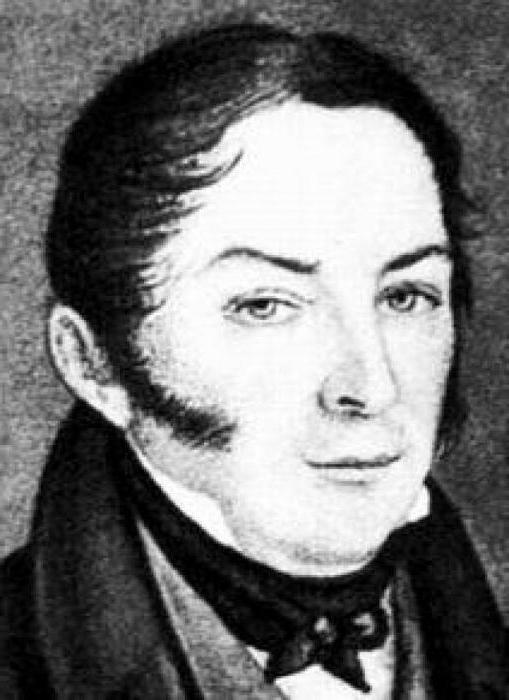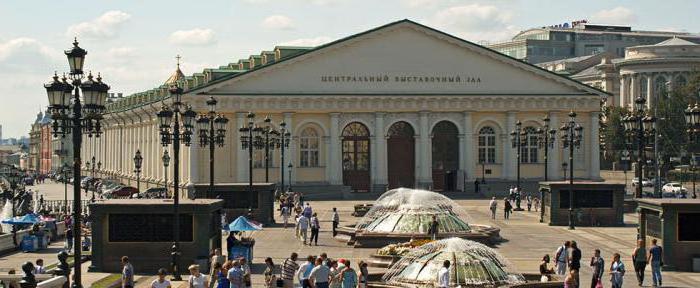Foreigners played an important role in shaping the architectural appearance of Moscow and St. Petersburg. But Giuseppe Bova can hardly be called a guest of Russia. He took a lively part in the life of the country and put his soul into his buildings.
Osip Ivanovich Bove: a brief biography
The real name of the architect is Giuseppe Bova, although he was born in St. Petersburg (1784). A native of Italy was his father, a Neapolitan painter Vincenzo Giovanni Bova. Later, the boy began to be called in the Russian manner - Osip. When he was a child, the family moved to Moscow. He will give all his strength and talent to this city. At the age of 18, Beauvais entered the school in order to master the architectural business under the leadership of Francesco Camporezi. After graduation, the career growth of the young man occurred rapidly. As an assistant architect, he was lucky to work under the leadership of such great masters as Rossi and Kazakov.

In the midst of the events of 1812, Osip Ivanovich Bove became a member of the people's militia. Fortunately, during the hostilities he was not injured and after demobilization he was appointed to the architectural commission for the restoration of Moscow as the head of the “facade”. Of the four sectors of the city, Beauvais got the central one. Arbat district, Presnensky, Tver, Urban and Novinsky - the architect gave this part of the city the look that has survived to this day. He designed Red and Theater Square, the Alexander Garden - the three main architectural ensembles of the capital center. In addition, Beauvais was engaged in the development of the facades of residential buildings of post-war Moscow and church construction.
As an architect, Beauvais received a well-deserved recognition during his lifetime and did not need anything. He had money, fame and a loving family. Perhaps the only thing he could not achieve was the status of an academician, because for some reason he could not fulfill the task of the Academy of Arts. Most likely, it was a lack of time. Possessing such talents, it would be unlikely that Beauvais would not be able to draw up a project for the theater building (namely, this was the assignment). He died in the summer of 1834, having not lived a bit before his 50th birthday. The architect was buried in the cemetery at the Donskoy Monastery, for which he built a church during his lifetime.
Red Square
After the war, part of the square was destroyed, and the remaining space was occupied by merchants. The young architect Beauvais restored the damaged walls of the Kremlin and restored the Nikolskaya Tower along with the Resurrection Gate. Private shops, it was decided to clean the building of the shopping arcade. The building in the style of classicism with an elegant portico still adorns the city center and is now called GUM. Earthen fortifications, like the moat along the walls, were destroyed, and a boulevard was built on the site of the latter.
A little later, the first city monument was erected at the Basil's Cathedral , a monument to Martin and Minin and Pozharsky. The pre-war square had a completely different look, and its present appearance is entirely due to Beauvais.
Alexander Garden
At the red brick walls, it was decided to add greenery. The Kremlin Garden, or, as it is now called, the Alexander Garden, noticeably revived the center of the capital. As conceived by Beauvais, it was a regular park with picturesque ruins and small pavilions. Some of them have survived to our days, for example, the Italian grotto. To create the park, the bed of the Neglinka River flowing there had to be taken underground. It was originally planned with its help to create a system of ponds, but the idea was not translated into reality.
Manege
Drawings of the arena were dealt with by another architect. Beauvais led his decoration and sculptural decoration. Designed the Betancourt building in 1817. The design at that time was unique and had no analogues throughout the world. The building was intended for military exercises and was called the Exercirgauz, or Training House. The internal space was not to constrain regimental maneuvers. And managed to create such a structure! In a room where there were no internal supports and all the bearing load fell on the walls, 2000 people could comfortably fit.

In 1824, Beauvais created a decorative finishing project for the arena after a small reconstruction. It was supposed to decorate the walls with military armor, marking the victory, power and greatness of the state. Plastering work was carried out, the building is decorated with stucco molding. The walls are reinforced with decorations made in the form of legionnaire attributes. In the dead spaces of the walls, it was planned to fix cast-iron high reliefs, but they were not cast.
theatre square
The Petrovsky Theater, which was previously located on the site of the Bolshoi, burned down before the war, in 1805. And only in 1816 it was decided to transform the area. It was required to build a new theater building and to set up a rectangular square in front of it. The front facades of the buildings closed the left and right squares, and the best view of it was to open from Kitai Gorod.
Petersburger Andrei Mikhailov designed the Bolshoi Theater itself. Beauvais supervised the work and made significant changes to the drawings. He reduced the cost of construction, adjusted the size of the future theater in relation to the area and surroundings. The main outlines and composition have been preserved, and at the same time, the role of decoration and decorative elements has been strengthened.
Like the Manege, the Bolshoi Theater was called to glorify the city, which won the war. This could not be better contributed to the majestic classic style. A sculpture group depicting Apollo in a chariot was installed on the portico. It was made of alabaster and destroyed by the fire of 1853. Later it was replaced by a composition by Klodt. She repeated the same plot, but was larger in size and more dynamic.
The opening of the theater took place in early January 1825. Spectators in the boxes applauded. This was a triumph not only for the acting troupe, but also for the architect himself.
Triumphal Gate
Unlike the Arena or the Bolshoi Theater, the Arc de Triomphe is a completely original project by Beauvais. The construction was planned at the entrance to Moscow from the St. Petersburg direction at the Tverskaya Zastava. About two years it took only to sketch and draw, and in 1829 the final version was approved. A handful of silver rubles was thrown into the foundation “for happiness” and a commemorative bronze plate was laid.
During the construction, stone from the Samotechny Canal and the Tatar “marble” from the village near Moscow were used. The sculptural compositions are made of cast iron by sculptors Timofeev and Vitali. All of them are cast according to sketches that the architect independently created. Due to interruptions in funding, construction took 5 years, and the monument opened in the autumn of 1834.
I must say that the modern Triumphal Gate on Kutuzovsky Prospekt is a remake. The original ones were dismantled a century after construction as part of the reconstruction of the square. Measurements, sketches and photography were made in order to later restore the arch at the Belorussky railway station. Decorative elements were deposited in museums. Huge cast-iron columns during World War II were remelted for front-line needs, only one was saved. But thanks to these drawings and surviving fragments in 1968, the arch was restored on Kutuzovsky Prospekt next to the Battle of Borodino panorama.
Hospitals
Loyal to his beloved city, the architect Beauvais worked not only on monumental buildings, but also on rooms intended for ordinary people. One of them is the City Hospital in the Kaluga outpost area. Beauvais began work on her drawings in 1828. A spacious magnificent building in the style of classicism, decorated with a "branded" portico, has opened its doors for Muscovites in need of help.
For comfortable accommodation of patients, the architect provided for light buildings. The walls were decorated with bas-reliefs, some of which have survived to this day.
Osip Ivanovich Bove converted the Gagarin's house into another hospital, Catherine’s. Work began in 1825. Despite this, both hospitals opened only in 1833. At that time, they had the best technical base in Russia.
Temple construction
Among the churches built by Beauvais, one can mention the Pokrovsky Church, the St. Nicholas Church in Kotelniki, the Church of the Holy Trinity on the territory of the Danilovsky Monastery. As part of the construction of hospitals, two churches were erected at them. In 1822, a wonderful temple was built in the village of Arkhangelsk, consecrated in honor of the Archangel Michael. The empire-style rotunda church was made of bricks. The three-tier bell tower was crowned with a high spire. The church is well preserved and was recently restored.
The Temple of Archangel Michael was so loved by people that another money was erected from the money raised by the parishioners according to the same sketch. In the village of Pekhra-Pokrovskoye there is a "twin" of the Arkhangelsk church - Pokrovsky temple. It differs from the prototype in white and blue colors.
Residential buildings
As the architect in charge of the facades of post-war Moscow, Osip Ivanovich Bove could not but influence the appearance of ordinary residential buildings. Under his leadership, compilation guides were compiled, entitled “Albums of Model Projects”. Here are recommendations and examples of how the houses of representatives of various urban estates should look like. You could choose the right one, guided by your taste and prosperity.
Thanks to Bova, the city mansion appeared as a completely new type of house. For the merchants, a tenement house was developed: the upper floor was reserved for the owners, and the lower floor could accommodate shops and shops.
An invaluable architectural heritage was left by Osip Ivanovich Beauvais. The sights of Moscow are inextricably linked with his name. Come visit and see for yourself!